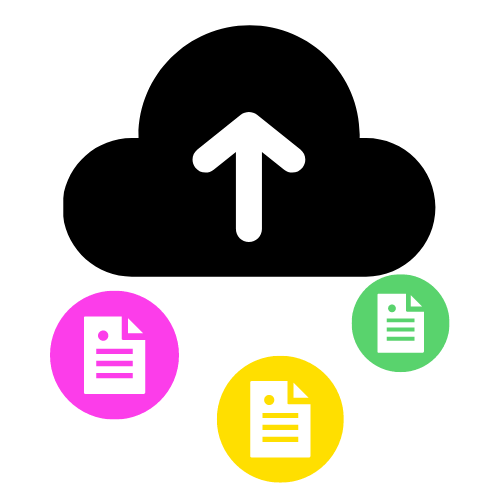In the glamourous world of distribution channel marketing, there’s a delicate balance between being a smooth operator and being a hot mess. Seasoned channel marketers are all too familiar with the hardest and most frustrating parts of marketing strategy. In this blog, I want to confront the worst parts of distribution channel marketing and talk about how we can transform obstacles into opportunities for more efficiency and revenue-driving results.
The Complexity Conundrum
The bane of effective distribution channel marketing is, without a doubt, complexity. The channel is already like a haunted forest with all kinds of unseen forces working in the shadows—supply chain disruptions, economic uncertainties, buying committee influencers, oh my. The increasing demand for marketing to prove its value can sometimes make things even murkier and more time-consuming. We’ve all witnessed marketing campaigns so convoluted and disconnected from sales teams that the only numbers they drive are hours lost to inefficiency.
The antidote? Simplification. Streamline processes, define roles clearly, and ensure that every partner grasps the system. Some things you can do to reduce the confusion include:
- Establish clear communication and documented, step-by-step processes so all your teams are on the same page, speaking the same language.
- Develop a centralized resource hub where all marketing assets and sales enablement resources can be accessed easily. Reduce the time salespeople spend info-hunting and increase the time they spend engaging meaningfully with customers.
- Implement a feedback loop with frontline sales teams to gather insights on customer interactions. This real-time data can help pivot marketing strategies to remain relevant and impactful.
Data Silos: The Black Holes of Information
Ah, data silos. The black holes where valuable information goes to die. Fragmented information scattered across different departments and inevitably falling between the cracks is fatal to marketing departments. Integration is critical. By ensuring seamless data flow between partners and within the organization, we can make informed decisions that drive the marketing strategy forward.
Integrate software as much as possible, so data is shared across (and over and under and through) all your sales and marketing platforms, creating the shortest route to useful insights.


Adopt an internal cloud-based platform that allows for real-time data sharing and collaboration. Seriously, this is a must have. If you’re not using Teams or Google Drive or some other tool that lets every work and share and collaborate on files with real-time updates (and doesn’t crash when multiple people have the same document open), you’re already losing the game.
Establish program hierarchies that define who can access which parts of your programs—this includes the programs you use internally and those you offer your channel. This has three purposes: helps maintain data accuracy, makes for better program user experiences, and keeps your most vulnerable data secure.
Example:
Extu’s incentive platform has an access hierarchy feature so you can control who sees what. Regional sales dealers and managers see only the promotions relevant to them. This makes for a better, easier program experience.
Misalignment: The Silent Profit Killer
Misalignment between your company’s objectives and your partners’ creates a rift that devours profits. Alignment doesn’t occur magically even when both partners are working in good faith. It requires intentional communication and, more often than not, incentives. When partners are aligned and working towards unified goals with clear understanding of how their actions benefit their business and yours, the entire channel prospers.
- Conduct regular alignment workshops to ensure that everyone understands the company’s vision and how their role contributes to it. Keep it as simple and transparent as possible.
- Create shared goals and KPIs that align with both the company’s objectives and the partners’ success metrics.
- Offer marketing and incentive technology like Extu’s that comes with anonymized benchmarks data built in—that way partners can see how their results stack up to business’ like theirs.
Incentive Programs: A Motivational Minefield
Incentive programs can be potent motivators, but they can also backfire. Ill-conceived incentives might promote short-term wins at the expense of long-term relationships. The solution? Craft incentive programs that reward not just immediate sales, but also partnership longevity and customer satisfaction. Let’s foster a win-win scenario that encourages sustainable growth.
- Offer non-monetary rewards such as recognition, exclusive training, or market development funds that can help build long-term relationships. Debit and gift card rewards are a great option because they have the same widespread usefulness as cash, but don’t get mentally lumped in with salary/commission.
- Use incentive technology that allows you to run multiple, simultaneous sales promotions for different segments of your channel. Tailor incentives to different partner segments to address their unique strengths and opportunities, while allowing them to aim for specific their business goals.
- Monitor and measure the effectiveness of incentive programs regularly to ensure they are driving the desired behaviors. Your incentive campaigns and promotions should get increasingly more successful as you learn which incentive strategies work best for each channel segment or product.
Training: The Overlooked Foundation
Training is frequently neglected in distribution channel marketing, resulting in a workforce that’s inadequately prepared to sell or support the product effectively. Comprehensive training programs are vital. They equip partners with the necessary knowledge and skills to excel, which in turn, enhances the brand’s reputation.
- Offer certification programs to promote the expertise of sales and support staff. Highlight and recognize when your channel partners learn new skills or earn certifications—this shows you prioritize a highly talented, knowledgeable distribution channel.
- Utilize e-learning platforms for scalable, on-demand training resources. Incentive programs like Extu’s double as e-learning programs by allowing you to reward and recognize channel partners who pass quizzes and complete training courses with multimedia training assets.
- Incorporate hands-on workshops and simulations to enhance practical skills and product knowledge. Nothing promotes information retention better than learning in a novel environment and incorporating multiple senses.
Transparency: The Building Block of Trust
Transparency is essential, but many distribution channel members fall into the trap of concealing information from each other. Partners are hesitant to share information, protective of their customers’ data and fearful that vendor brands will go around them to sell directly to the customer. Meanwhile, vendors are scared that partners don’t take the time to fully understand their inventory, opting instead for the cheapest and most inconvenient deals. As you may be all too aware, this breeds mistrust.
By fostering transparent communication, sharing insights, and collaborating openly, trust becomes the bedrock of your channel relationships.
- Share strategic insights and product roadmaps with partners to demonstrate trust and foster collaborations. Share exclusive scoops on your plans and strategies when it makes sense, and when it doesn’t alienate other partners.
- Implement a transparent reporting system where partners can track their performance and rewards. One thing all businesses have in common is the need for ROI knowledge. Sharing deep insights into the specific sources of revenue wins and misses will help you forge better channel partnerships.
- Encourage open dialogue through regular Q&A sessions, surveys, and feedback. Use website and marketing automation tools to prompt partners for feedback at the right time, in the right ways—usually, the instant they’re thinking about it, such as after a purchase or resource download.
Stagnation: The Enemy of Innovation
Stagnation stalks all sales and marketing departments. Distribution channel marketing is no exception. Not only is marketing technology changing, channels themselves are always changing as M&As chug along, supply chains are disrupted, customer spending habits change, etc. Encourage innovation at every level, from product development to marketing tactics. Stay ahead of the trends, and your distribution channel will be future-ready.
- Create an innovation incubator program that encourages partners to submit and develop new ideas. Tech companies are known for their “blue sky” meetings and hackathons that nurture new ideas and (temporarily) ban the word “no.” There’s no reason businesses in automotive, building, energy, and other spaces shouldn’t adopt and tweak these concepts.
- Offer market research and trend analysis resources to help partners stay informed and adapt their strategies. Direct market research is notoriously expensive and hard to compile. Offering this to your partners is one of the best ways you can cultivate trust and collaborate.
- Regularly review and refresh marketing materials to ensure they remain current and effective. Not only does this ensure that your resources remain relevant, but revisiting old content is a great way to come up with ideas for new content.
Challenging the Status Quo
As skeptics, we must challenge the status quo and push for better practices in distribution channel marketing. It’s not enough to accept things as they are; we must question, critique, and demand more. Only through this relentless pursuit of excellence can we hope to refine our strategies and achieve the success we seek.
In conclusion, while distribution channel marketing presents its fair share of challenges, each issue offers a chance for positive change. By confronting these difficulties head-on, we can transform our distribution channels into streamlined, data-driven, aligned, and innovative powerhouses. Let’s not be complacent. Let’s challenge ourselves to elevate distribution channel marketing, not just for our benefit, but for our partners and customers alike. After all, in the grand scheme of channel marketing, we’re all in this together, striving for a common goal: success.



